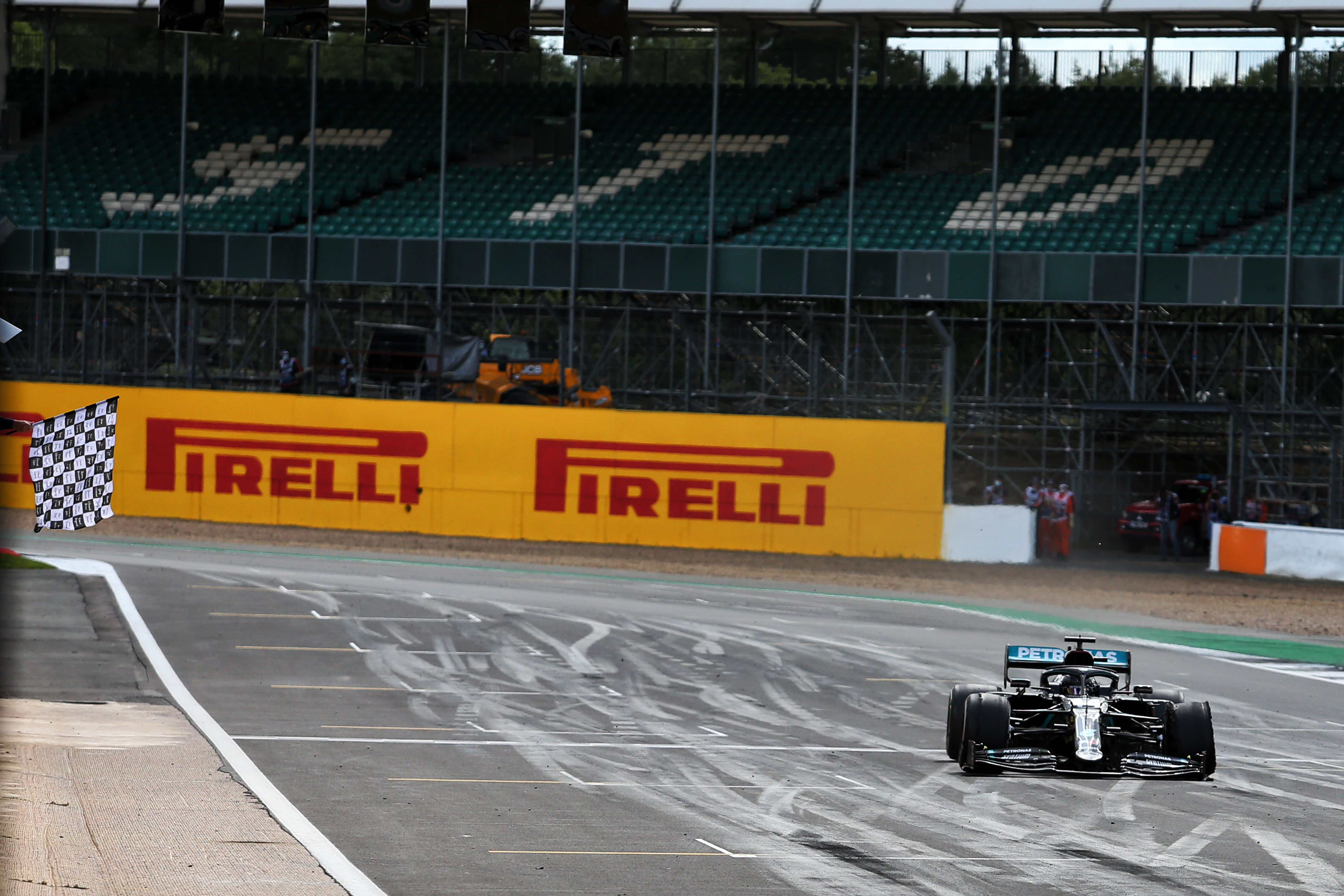Up Next

Data from Lewis Hamilton’s final lap of the British Grand Prix reveals the “incredibly impressive” job the Formula 1 world champion did to win with a punctured front-left tyre.
Mercedes has released a comparison of Hamilton’s final lap against the penultimate lap and one from slightly earlier in his stint, to showcase the difference in cornering speeds as he attempted to drag his car to the finish line before being caught by Red Bull’s Max Verstappen.
Hamilton’s tyre failure occurred on the entry to Brooklands, leaving him with 3.8km of the circuit to complete include the fast Copse right-hander, the sweeps of Maggots and Becketts, and the run down the Hangar Straight to Stowe.
The below screengrab from Mercedes’ post-race strategy video, which you can see in full further down this page, shows the dramatic drop-off in speed as Hamilton approaches Luffield (Turn 7) and just how much slower he was forced to go throughout the lap.

But the best representation of the quality of Hamilton’s effort is how the speed difference gets smaller as the lap progresses – from almost half the speed on the run to Copse to finishing the lap with an apex speed around 85% as fast into the final sequence of corners.
The red line indicates his speed relative to the previous lap in yellow, which was already a reduced speed as Valtteri Bottas’s tyre failure prompted Hamilton to back off as a precaution, and a ‘normal’ lap in the stint in green.
As the lap develops the difference in cornering speeds reduces, indicating that Hamilton was pushing harder and getting closer to the limit of what he could get away with.
“One of the questions was, in fact many of them, how impressive was Lewis in getting the car home,” said Mercedes’ strategy chief James Vowles.
“The answer is incredibly impressive.”
Even on his penultimate lap, when Hamilton was trying to minimise the stress on the front-left, his minimum speed through Copse was 235kph and he managed to keep it at 140kph after the tyre failure.
Through Becketts, Hamilton was only 60kph slower on his final lap – 125kph compared to 185kph (68%).
Hamilton was getting more comfortable and taking more speed but he could still go faster, as evidenced by the middle sector being around 1.6seconds slower than Bottas managed when he had suffered his puncture.
Crucially, Hamilton responded in the final sector – which The Race had identified earlier this week as one of the vital moments of the dramatic end to the race.
Vowles was keen to highlight Hamilton’s speed through Stowe and the run down to the complex.
“I would urge you to look down towards Turn 15, a very high-speed right-hand corner, remembering that it’s the front-left that has gone, the tyre that would be loaded in that circumstance,” said Vowles.
At this point, Hamilton was doing 135kph, compared to 190kph on his previous lap. So while he was at less than 60% of his speed through Copse on the final lap Hamilton managed to do Stowe at just over 70%.
Hamilton then attacked the first part of the Club complex so aggressively he locked the front-left but was able to get the car stopped and turned, at which point he was just 15kph slower than on lap 51.
“He properly guns it on the way down into the last sequence of corners to get across the line,” Vowles added.
“The fact he took that apex speed with fundamentally three tyres on the car is mighty and he did a great job getting it across the line.”

Hamilton was not the only Mercedes driver forced into damage limitation mode with a puncture, although team-mate Valtteri Bottas’s efforts were ultimately in vain because the circumstances of his puncture were not as fortunate.
Mercedes could have done nothing to pre-empt Bottas’s failure as while the Finn had complained of vibrations there was nothing to suggest his performance would be dramatically impact or that there was a safety concern.
Vowles said Bottas’s tyre failure was “instantaneous, the pressure loss was immediate”, wrecking his race as it occurred when he was just past the pitlane entry and therefore had to do a full lap with the puncture.
However, Hamilton and others had said post-race that Mercedes should have pitted the race leader when Red Bull decided to take advantage of Bottas’s problem to stop Max Verstappen without losing a position and then going for fastest lap.
That decision potentially cost Verstappen the race, unless he had suffered his own failure, but it also gave Mercedes a window to pit Hamilton as a precaution, which Vowles said it should have taken.
“The reason why we didn’t was the car was 30 seconds up the road, Lewis was already driving many seconds off the pace and all he needed to do was to do the last lap of the race in the middle of the road,” he said.
“You are not that nervous about running on a tyre for another lap and there’s risks involved in doing another pit stop.
“Driving around one more lap out there in the middle of the road up to 15 seconds off the pace if you wanted to can sometimes be a safer proposition.
“Clearly as we stand here now, that was a mistake and one that could have cost us dearly, and fortunately didn’t on the day.”





